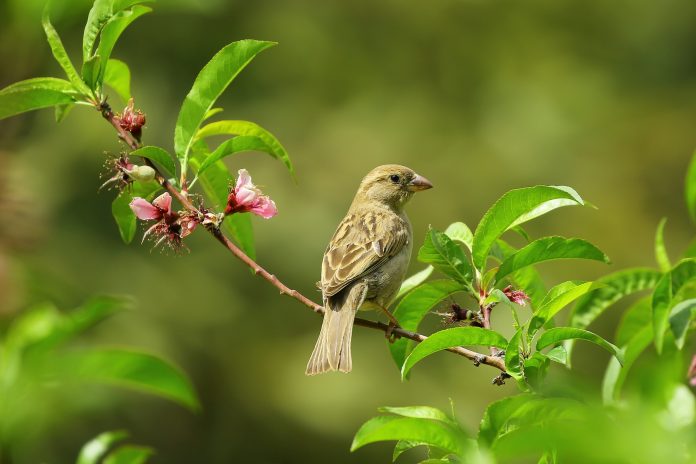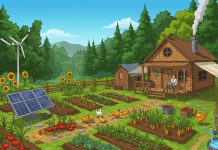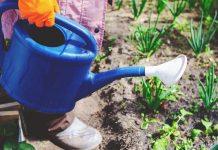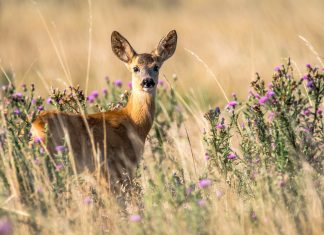Are you a homesteader, farmer, or gardener who frequently struggles to identify the bird species that often visit and potentially damage your garden? Learning how to properly identify birds can be an invaluable skill, especially for those striving to protect their crops from predatory pests. If you want to deter them from your precious garden, services like Bird Proofing can be implemented.
Understanding what type of birds you’re dealing with is also important for knowing exactly which preventive measures you need to take. In this blog post, we will cover the basics of identifying some common bird species seen in home gardens and provide tips on reducing the risk of damage. Read on to find out more about Bird Species ID!
Introducing the Idea of Bird Species Identification
Bird watching is an activity that can be enjoyed by people of all ages and backgrounds. However, the vast variety of birds can make it difficult to identify each species.
That’s why bird species identification is crucial for any bird watcher, be it a beginner or an expert. The idea of bird species identification can seem daunting at first, but it’s quite simple. By observing the physical characteristics and behaviors of the bird, one can easily determine the species.
For example, the way a bird’s feathers are arranged, the color of its beak, or even the shape of its nest can be telling features. So why not try your hand at bird species identification on your next bird-watching adventure? You never know what amazing species you might discover!
Identifying Common Garden Birds and Their Behavior
Gardening can be an incredibly rewarding hobby, but the experience can be even more enjoyable when you’re able to appreciate the beautiful birds that visit your garden.
If you’re just starting to explore the world of birdwatching in your backyard, it can be helpful to know which birds are likely to make an appearance. Some of the most common garden birds include finches, robins, bluejays, and woodpeckers.
By observing their behavior, you can learn more about each species and gain a deeper appreciation for their unique personalities. For example, bluejays are known to be territorial and fiercely protective of their nests, while finches are more likely to be found flitting about and enjoying seeds from your bird feeders.
Once you start noticing these little details, you’ll be amazed at how much more vibrant your garden feels.
Exploring Common and Less-Common Garden Birds that May Pose Challenges
Gardening can be a relaxing and fulfilling hobby, but it’s not without its challenges. One challenge that gardeners may face is dealing with birds. Some species, such as robins and blue jays, welcome visitors to the garden.
Others, like sparrows and starlings, may cause havoc by digging up seeds or stealing fruit. But there are also less-common garden birds that can pose a challenge, such as the large and boisterous northern flicker or the aggressive and territorial ruby-throated hummingbird.
Learning about the behavior and habits of these birds can help gardeners create a welcoming environment for their feathered friends while minimizing any potential problems.
Tips on Preventing Common Garden Bird Predators From Entering Your Property
Gardening can be one of life’s most enjoyable and rewarding hobbies. However, it can be frustrating and heart-wrenching to find that your hard work in creating a beautiful garden has been destroyed by bird predators.
Whether you’re dealing with nests of hungry fledglings or persistent squirrels, there are several preventative measures you can adopt to stop common garden bird predators from entering your property. For example, installing netting over young plants or placing wire cages over individual flower beds can help deter birds from landing and nestling in your garden.
You can also try scare tactics, such as motion-activated sprinklers or fake owl decoys, to keep garden predators at bay. By taking proactive steps to protect your garden, you can ensure that your plants thrive and your hard work is not in vain.
Methods for Humanely ‘shooing’ Away Birds that May Be Damaging your Garden
If you’ve spent any amount of time tending to a garden, you know how frustrating it can be when a flock of birds decides to make a meal out of your precious plants. While it’s tempting to resort to extreme measures to get rid of them, there are a variety of humane methods that can help shoo them away.
One effective strategy is to create visual deterrents, such as reflective tape or holographic bird tape, that discourage birds from landing in your garden. You could also try using noise deterrents, like wind chimes or motion-activated sprinklers, that startle birds and make them think twice about sticking around.
Whatever method you choose, it’s important to remember that birds are valuable members of our ecosystem and should be treated with care and respect.
Summarizing the Importance of Bird Species ID to Understand Potential Threats to Gardens
Bird species identification is a crucial skill for any bird enthusiast. Knowing the types of birds that frequent your garden can lead to a better understanding of potential threats that may impact the health of your plants. For example, some birds may be attracted to your garden because of the presence of certain insects, while others may be there to eat fruits or seeds.
A trip to an RSPB location can bring an unmatched joy for bird enthusiasts. A remarkable variety of bird species you’ve never even heard of inhabit these places. If you’ve ever wanted to experience birdwatching on a grand scale, this is where you want to be. This LayerMap guide to RSPB and WWT Reserves has more details. Trust me, your binoculars and your soul will thank you.
By knowing the specific birds that are present, you can take action to limit any damage they may cause. Additionally, bird species identification allows you to gain a deeper appreciation for the wildlife that surrounds us, and helps us to better understand the interconnectedness of the natural world. So the next time you step outside into your garden, take a moment to observe and identify the birds that are present – it could make all the difference!
Whether you are the most knowledgeable of gardeners or just starting your journey, bird species identification is a useful and important tool. Knowing which birds frequent your garden can help protect it from insect pests, and also help you to provide a safe haven for our feathered friends. If you want to delve into the fascinating hobby of birdwatching, there are many resources online and from conservation groups that will help you on your journey of discovery. Not only will observing birds make your garden more inviting and enjoyable, but it also provides an opportunity to get out and cultivate a bit of nature in our ever-increasing urbanized world. So if you’re looking for an activity that is both stimulating and rewarding, take some time to look at ways to come up with clear identification methods for all those feathery creatures flying above.














